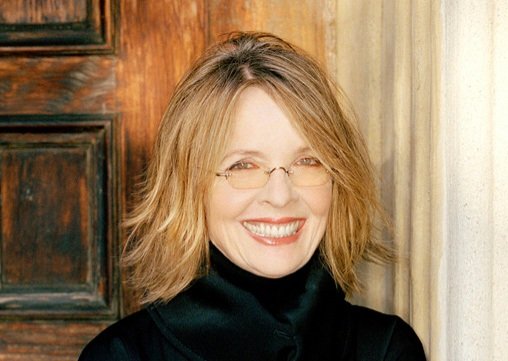In the quiet hours of a Los Angeles morning, as the sun crept over the Hollywood Hills she once called home, Diane Keaton slipped away on October 11, 2025, at the age of 79. The news, first confirmed by People magazine, landed like the final fade-out of one of her most cherished Woody Allen collaborations—a poignant, unexpected close to a reel that had unspooled with such singular grace and wit for over five decades. For those of us who have spent lifetimes dissecting her performances frame by frame, this loss feels not just personal, but like the dimming of a projector light in an empty arthouse theater. Keaton wasn’t merely an actress; she was a walking, talking manifesto on vulnerability, eccentricity, and the quiet revolution of female agency on screen.
Born Diane Hall on January 5, 1946, in Santa Ana, California, Keaton arrived in New York in the late 1960s with the wide-eyed ambition of a theater kid chasing Brecht and the Living Theatre. But it was her serendipitous collision with Woody Allen that ignited her star—a partnership that would redefine romantic comedy and earn her the Academy Award for Best Actress in 1978 for Annie Hall. Oh, Annie Hall. Where to even begin? That film remains my desert-island pick from her oeuvre, a neurotic jazz riff on love and loss where Keaton’s Annie isn’t just Alvy Singer’s (Allen) paramour but the beating, conflicted heart of the piece. Her wardrobe alone—those menswear-inspired vests, wide-brimmed hats, and scarves knotted with defiant nonchalance—became a cultural shorthand for ’70s urban cool. Remember the lobster scene? Or her split-screen therapy session with Allen, where she confesses her hypochondria with that trademark half-smile, equal parts self-deprecating and seductive? Keaton didn’t play Annie; she was Annie, a whirlwind of contradictions that made every awkward pause electric. 8’s
It’s impossible to speak of Keaton without invoking Allen, with whom she made seven films, each a masterclass in verbal sparring and emotional jujitsu. Sleeper (1973) showcased her in slapstick mode, a futuristic rebel with a deadpan delivery that turned sci-fi absurdity into something profoundly human. In Manhattan (1979), she’s the cerebral Mary Wilke, quoting Kierkegaard over black-and-white vistas of the city she embodied so effortlessly—Keaton’s New York wasn’t Scorsese’s gritty underbelly but a luminous, literate dreamscape. And Interiors (1978), Allen’s Bergman-inflected stab at drama, where she plays Renata, the unraveling artist trapped in a sterile Hamptons manse? It’s Keaton at her most shatteringly internal, her wide eyes registering familial fractures like fault lines in a Kurosawa landscape. These weren’t mere roles; they were extensions of her own kaleidoscopic psyche—bookish, bohemian, forever teetering on the edge of reinvention.
Yet to pigeonhole Keaton as “Woody’s muse” would be a disservice to the breadth of her cinematic footprint. Francis Ford Coppola cast her as Kay Adams-Corleone in The Godfather (1972), transforming a peripheral figure into a quiet force of moral reckoning. In the sequels—The Godfather Part II (1974) and the operatic Part III (1990)—Keaton’s Kay evolves from wide-eyed bride to embittered exile, her steel-spined confrontations with Michael (Al Pacino) delivering some of the trilogy’s most gut-wrenching silences. It’s a performance of restraint amid operatic excess, the kind that lingers like the faint echo of Nino Rota’s theme. Then there’s Reds (1981), Warren Beatty’s sprawling epic on the American left, where Keaton’s Louise Bryant burns with radical fire—her affair with John Reed (Beatty) a whirlwind of ideology and infidelity. She earned her second Oscar nomination here, not for histrionics but for the raw, unadorned conviction she brought to a woman rewriting history in real time.
Keaton’s post-Allen renaissance was no less beguiling, though often underrated by the awards machine. In Baby Boom (1987), she flipped the script on yuppie excess as a high-powered exec thrust into single motherhood, blending screwball charm with a feminist edge that prefigured the “having it all” debates of the ’90s. Her J.C. Wiatt isn’t a saintly martyr but a gloriously messy striver, fumbling apple pies and boardroom pitches with equal aplomb. And let’s not forget The Family Stone (2005), where she anchors a holiday ensemble as the matriarch with a secret, her bohemian warmth masking a profound ache—Sarah Jessica Parker’s fish-out-of-water foil in a film that feels like a lump-in-the-throat embrace.
What bound all these roles, what made Keaton indispensable to the cinephile’s canon, was her unapologetic otherness. In an era of bombshells and ingenues, she was the anti-Garbo: gawky, intellectual, forever fiddling with her hands or peering over oversized glasses. Her line readings carried the cadence of a jazz solo—hesitant, improvisational, alive with subtext. She championed directors like Coppola and Allen at their most ambitious, but also lent her laconic magic to indies like Hanging Up (2000) and Something’s Gotta Give (2003), where her rom-com resurgence opposite Jack Nicholson proved that elegance only deepens with time. Even in later turns, like the poignant grandmother in Love, Again (2023), Keaton’s presence was a balm—a reminder that cinema’s greatest gift is capturing the beauty in our unraveling.
As tributes pour in from co-stars and admirers—Al Pacino calling her “the quiet storm of our family,” Meryl Streep praising her “fearless vulnerability”—one can’t help but rewind to that iconic Annie Hall monologue: “I feel that life is divided into the horrible and the so-so. The so-so predominates.” Keaton’s career was anything but so-so; it was a glorious, hat-tilting parade of the horrible made luminous. She leaves behind a filmography that’s less a highlight reel than a love letter to the mess of being alive—funny, heartbreaking, eternally rewatchable.
Rest in celluloid, Diane. The marquee will never quite shine the same without you. We’ll keep the lights low and the projector humming, savoring every outtake of your extraordinary ordinary.
Lead image: Firooz Zahedi via Wikimedia Commons

